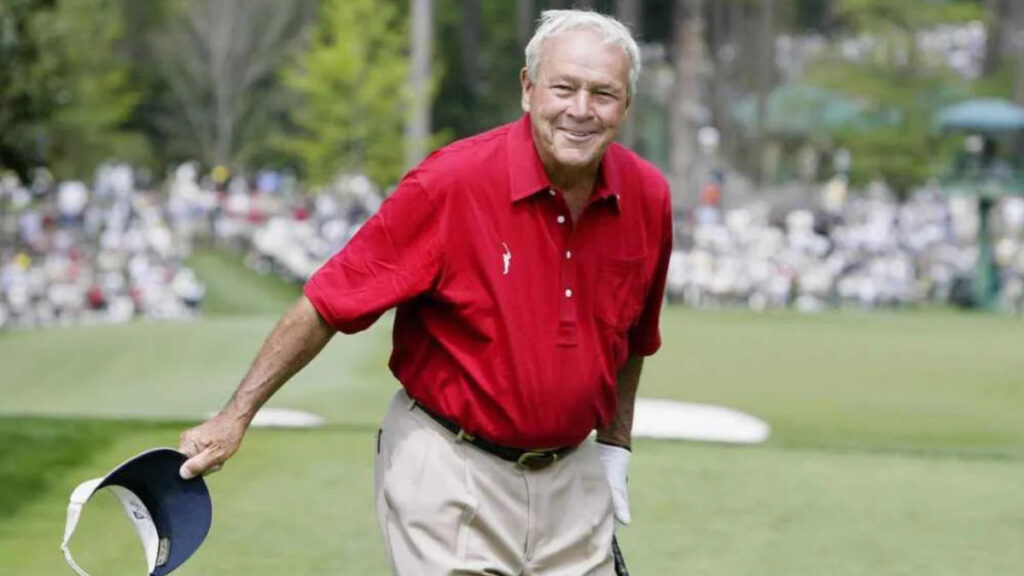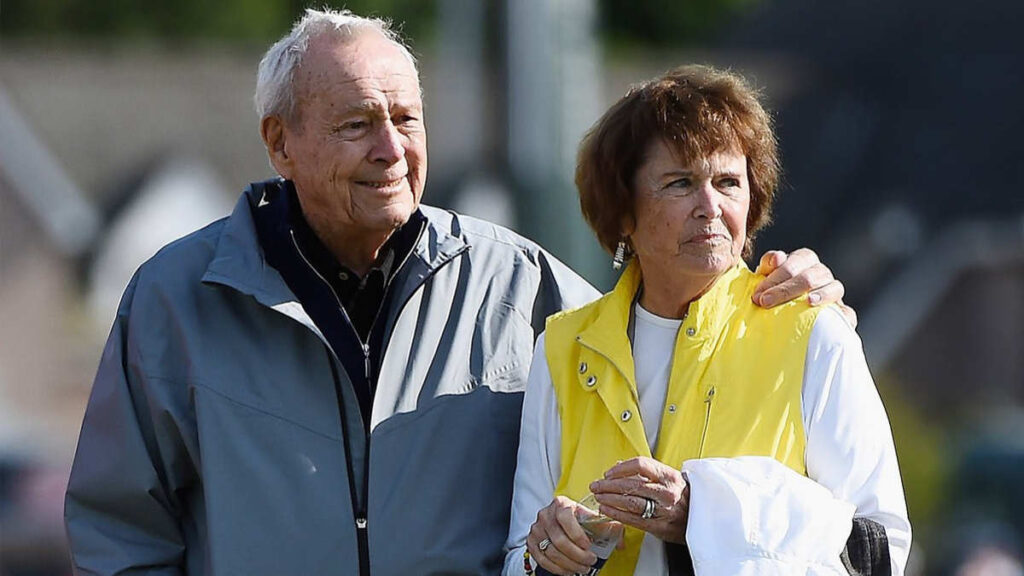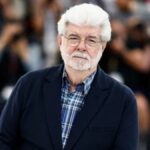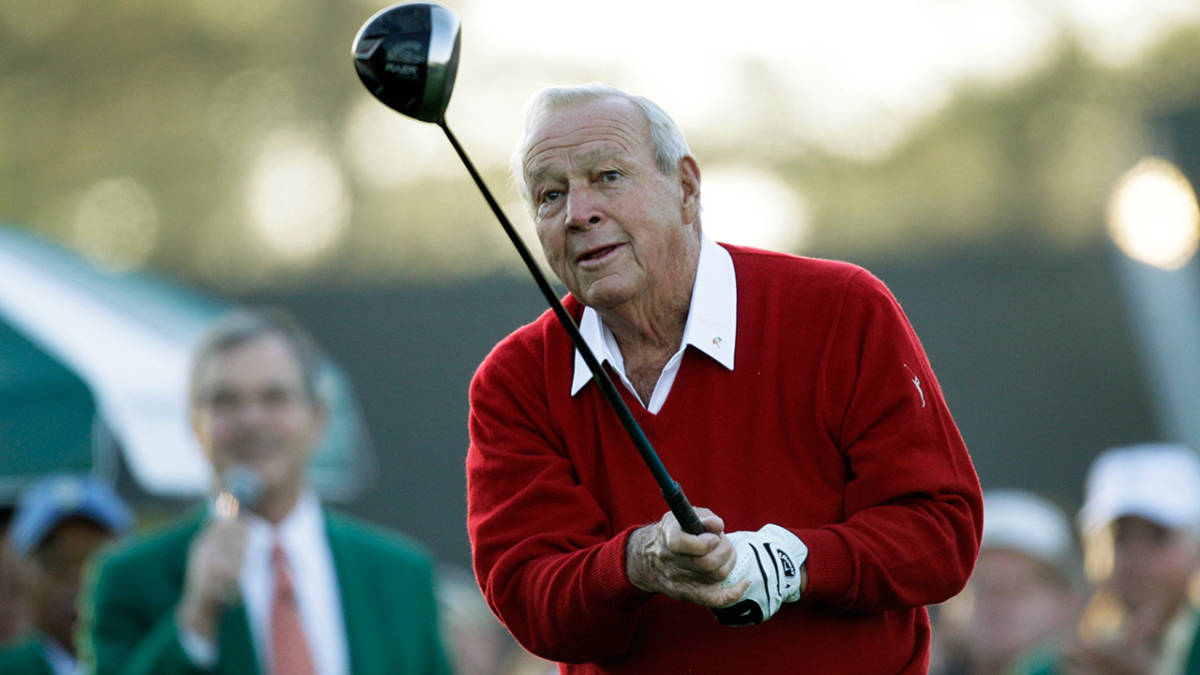Arnold Palmer may have passed away in 2016, but his legacy—and his bank account—continue to thrive in 2025. Known as “The King” of golf, Palmer wasn’t just a legendary athlete; he was a business powerhouse who helped transform the sport into a global phenomenon.
A seven-time major champion and one of the most beloved figures in sports history, Arnold Palmer was instrumental in bringing golf to television and to the masses. His career achievements on the PGA and Senior Tours are just the beginning of a financial empire that now totals an estimated $700 million in 2025, making him the Top 50 Richest Golfers in the World.
Why is Arnold Palmer’s net worth in 2025 still a hot topic? Because his estate continues to earn tens of millions each year from branding deals, licensing rights, and the iconic “Arnold Palmer” drink—proving his relevance hasn’t faded one bit.
In this article, we’ll break down Arnold Palmer’s salary, business ventures, endorsements, luxury assets, career milestones, and the smart moves that built one of the most enduring fortunes in sports.
Table of Contents
Arnold Palmer’s Net Worth in 2025
Even nearly a decade after his passing, Arnold Palmer’s net worth in 2025 is estimated at a staggering $700 million, according to Celebrity Net Worth. This figure places him among the richest athletes in history—living or deceased—thanks to a legacy built on golf greatness, visionary business moves, and long-term brand licensing deals.
While Palmer’s on-course earnings totaled just $3.6 million during his competitive career, the real expansion of his fortune came through smart brand building and a wide range of business ventures that continue to pay dividends today. His estate reportedly generates $40 million annually, driven by royalties, product sales, and international licensing agreements.
Estimated Net Worth Over the Years
| Year | Estimated Net Worth | Key Contributors |
| 2010 | $400 million | Endorsements, apparel in Asia, course design |
| 2016 (death) | $675 million | Golf Channel co-founder, beverage licensing |
| 2020 | $690 million | Continued royalties, estate-managed assets |
| 2025 | $700 million | Global brand expansion, “Arnold Palmer” drink |

Contributors to Arnold Palmer Wealth
Enduring Licensing Revenue: Arizona’s “Arnold Palmer” beverage line sells over 500 million units annually, delivering consistent royalties.
Brand Power in Asia: Arnold Palmer-branded apparel thrives across hundreds of retail outlets in Asia, especially in Japan, South Korea, and Thailand.
Golf Course Architecture: His firm, Arnold Palmer Design Company, has created or redesigned over 300 golf courses worldwide, generating ongoing revenue.
Posthumous Management: His estate remains active, strategically expanding licensing and endorsement opportunities under the Arnie’s Army brand.
“Arnold Palmer didn’t just play golf—he built a brand that’s still earning $40 million annually, nearly a decade after his death.”
—Kurt Badenhausen, Senior Contributor, Forbes, 2017
How Arnold Palmer Makes Money in 2025
Though Arnold Palmer passed away in 2016, his brand continues to generate significant income through a diversified mix of endorsements, investments, business ventures, and licensing deals. His posthumous earnings remain among the highest of any deceased athlete, with Forbes reporting annual income of around $40 million as of recent years.
Salaries and Prize Money
Palmer earned approximately $3.6 million in career prize money from the PGA and Senior Tours. While this number seems modest by today’s standards, he was the first professional golfer to surpass $1 million in tour earnings back in 1967. Most of his wealth, however, came after his competitive years, not from salaries or winnings.
Endorsements and Licensing Deals
Arnold Palmer revolutionized sports marketing. As one of the first athletes to fully monetize his brand, his early endorsement portfolio included:
- Rolex
- Pennzoil
- Hertz
- United Airlines
- Callaway
- Ray-Ban
Today, the most lucrative of his deals is the licensing agreement with Arizona Beverages for the popular “Arnold Palmer” half iced tea, half lemonade drink. The product reportedly sells over 500 million cans annually, with a portion of every sale contributing to Palmer’s estate, generating millions in passive income each year.
Palmer also built a massive brand presence in Asia through Arnold Palmer-branded apparel, now sold in 400+ retail outlets across Japan, South Korea, and Southeast Asia.
Business Investments and Ventures
Palmer’s entrepreneurial footprint extended beyond endorsements:
Arnold Palmer Design Company: His golf course design firm has developed over 300 courses in 37 U.S. states and 25 countries. These projects generate ongoing design fees and royalties.
Bay Hill Club & Lodge: Palmer owned and operated this premier golf resort in Orlando, home to the annual Arnold Palmer Invitational on the PGA Tour.
Arnold Palmer Motors: In the 1970s, he opened auto dealerships in Pennsylvania and Florida, selling Cadillac and Buick models. These operated successfully for decades.
He also co-founded The Golf Channel, which became a major media platform before being acquired by NBC, further contributing to his wealth.
Other Income Sources
- Royalties from branded merchandise and global licensing
- Public speaking and appearance fees (pre-2016)
- Book sales, including memoirs and golf instruction titles
- Real estate value appreciation, including homes in Pennsylvania, Florida, and California
“Palmer’s licensing model became a blueprint for modern athletes—every product had his stamp of trust and timeless appeal.”
—David Gage, Brand Strategist, Finance Monthly, 2020
Arnold Palmer Career Timeline
1929
- Born on September 10 in Latrobe, Pennsylvania.
1947–1950s
- Attends Wake Forest College on a golf scholarship.
- Enlists in the U.S. Coast Guard (1951–1954), where he continues playing and promoting golf.
1954
- Wins the U.S. Amateur Championship, launching his path to professional golf.
- Turns professional later that year.
1955
- Wins his first PGA Tour event at the Canadian Open.
1958
- Wins his first major at the Masters Tournament.
- Quickly becomes one of the sport’s most popular figures thanks to his charisma and attacking style.
1960
- Wins the U.S. Open, marking one of the most memorable final-round comebacks in golf history.
- Helps popularize golf on television, growing the sport’s mainstream appeal.
1961–1964
- Wins multiple major championships, including two British Opens and two more Masters titles.
- Builds a massive fan base nicknamed “Arnie’s Army.”
1967
- Becomes the first golfer to earn $1 million in PGA Tour career earnings.
1967–1974
- Continues to dominate the sport, including 62 PGA Tour wins in total.
- Inducted into the World Golf Hall of Fame (1974).
1979–1990s
- Shifts focus to business ventures and Senior Tour, winning 10 senior events, including five senior majors.
- Launches Arnold Palmer Design Company, designing hundreds of golf courses worldwide.
1980s
- Opens Arnold Palmer Motors, a network of car dealerships in PA and FL.
- Expands into endorsement deals with companies like Rolex, Pennzoil, Hertz, and Callaway.
1995
- Helps co-found The Golf Channel, cementing his influence in golf media.
1999
- Westmoreland County Airport in Latrobe is renamed Arnold Palmer Regional Airport.
2000s
- Launches his signature “Arnold Palmer” iced tea and lemonade drink, which becomes a massive hit.
- Introduces Arnold Palmer apparel lines in Asia, expanding his brand across Japan, South Korea, and Southeast Asia.
2004
- Receives the Presidential Medal of Freedom from President George W. Bush.
2009
- Awarded the Congressional Gold Medal, the highest civilian award from Congress.
2016
- Passes away on September 25, at age 87.
- Net worth at the time estimated at $700 million.
2017–Present (Posthumous Legacy)
- Estate earns approx. $40 million annually, per Forbes.
- Brand continues to grow through drink sales (500M cans annually), apparel, and course licensing.
- The Arnold Palmer Invitational remains a major PGA Tour event at Bay Hill.
- Arnie’s Army Charitable Foundation continues philanthropic work in health, youth, and education.
“He wasn’t just a golfer—he was a cultural force who brought the game into living rooms and made it cool.”
— David Feherty, Golf Commentator and Former Pro, Golf Channel, 2016 tribute
Also See: Top 50 Richest Golfers in the World
Arnold Palmer’s Assets and Luxury Lifestyle
Arnold Palmer’s wealth wasn’t just measured by tournament wins or brand deals—it was also reflected in his refined taste and impressive collection of luxury assets. From private jets to prime real estate, Palmer lived with understated class, reflecting the sophistication of a man who transcended the game of golf.
Real Estate: Iconic Homes Across the U.S.
Palmer owned several high-profile residences, each tailored to his passions and lifestyle:
Latrobe, Pennsylvania: His longtime family estate and summer home, located near Latrobe Country Club, which he eventually owned. This location was central to his identity and where he maintained strong local ties.
Bay Hill, Orlando, Florida: A luxury estate adjacent to the Bay Hill Club & Lodge, which he also owned. This property became his winter home and the center of the Arnold Palmer Invitational, now a prestigious PGA Tour event.
La Quinta, California: A desert getaway near Palm Springs, ideal for golf and leisure. While value estimates are not public, properties in this area often exceed $3–5 million, especially those connected to golf resorts.
Private Jets and Aviation Passion
Palmer was a licensed pilot and deeply passionate about aviation:
- He flew private jets for over 55 years, logging nearly 20,000 flight hours.
- His aircraft over the years included models like the Cessna Citation X, one of the fastest business jets in the world.
- In 1999, the airport in his hometown was renamed the Arnold Palmer Regional Airport, honoring his contributions to both golf and aviation.
Cars and Dealerships
Palmer wasn’t just a car enthusiast—he was also an auto businessman:
- He owned Arnold Palmer Motors, a dealership group that sold brands like Cadillac and Buick in Pennsylvania and Florida.
- He drove Cadillacs, often customized with golf and personal features.
- While not a collector in the traditional sense, he appreciated quality and performance in vehicles, often opting for high-end American luxury models.
Fashion and Personal Style
Palmer’s clean, classic style made him a fashion icon in golf:
- Known for his tailored polos, vests, and cardigans, Palmer was one of the first athletes to have his apparel line.
- The Arnold Palmer clothing brand became especially popular in Asia, with hundreds of branded retail stores in Japan, Korea, and Thailand.
- He wore a Rolex for decades, reflecting both loyalty and luxury. The partnership with Rolex became one of his longest-standing endorsements.
Jewelry and Accessories
While Palmer wasn’t flashy, he had a taste for elegant accessories:
- Regularly seen wearing a gold Rolex, which symbolized his enduring success and taste.
- Preferred simple, timeless jewelry, such as gold rings or modest cufflinks, suited to his gentlemanly persona.
Unusual or Unique Assets
Golf Memorabilia Collection: Palmer amassed trophies, clubs, and historic memorabilia throughout his career, some of which are now housed at the USGA Museum and the Arnold Palmer Center for Golf History.
Golf Course Ownership: His control of Bay Hill Club and role in designing over 300 courses globally is both a financial and symbolic asset in the golf world.
“Few athletes enjoyed luxury like Palmer, but he did it with class—his real estate and aviation habits reflected refinement, not flash.”
– Marcus Gold, Luxury Real Estate Editor, Bloomberg Wealth

Arnold Palmer’s Personal Life
Arnold Palmer was born on September 10, 1929, in Latrobe, Pennsylvania, a small town that would remain central to his identity throughout his life. If he were alive in 2025, he would be 95 years old. Palmer’s humble beginnings and work ethic played a significant role in shaping both his character and his remarkable financial journey.
Family Background & Upbringing
Palmer was the son of Doris and Deacon Palmer. His father, a groundskeeper and golf professional at Latrobe Country Club, introduced Arnold to golf at an early age. Growing up in modest surroundings, Palmer developed a lifelong appreciation for discipline, loyalty, and hands-on work—qualities that later influenced his approach to business and branding.
Education
Palmer attended Wake Forest College (now Wake Forest University) on a golf scholarship, where he honed his competitive edge. After a brief hiatus to serve in the U.S. Coast Guard (1951–1954), he returned to school and the sport, ultimately turning professional in 1954.
Relationships & Family
Arnold Palmer married Winifred “Winnie” Walzer in 1954. Their marriage lasted 45 years until her passing in 1999. The couple had two daughters, Peggy and Amy, and several grandchildren. In 2005, Palmer married Kathleen Gawthrop, with whom he remained until he died in 2016.
His family has played a key role in managing his estate and brand in the years since, ensuring that his legacy and financial empire continue to thrive.
Lifestyle Habits & Values
- Palmer was known for his modest, approachable personality, despite his enormous success.
- He was a licensed pilot, flying his planes across the country for both personal and business purposes—a symbol of independence and success.
- Though he was once a smoker, he eventually became an advocate for quitting after health concerns, often using his public platform responsibly.
Philanthropy
Philanthropy was a cornerstone of Palmer’s legacy:
- Founded the Arnie’s Army Charitable Foundation, supporting children’s hospitals, youth development, and nature conservation.
- Key institutions include the Arnold Palmer Hospital for Children and the Winnie Palmer Hospital for Women & Babies in Orlando, Florida—both enduring testaments to his generosity.
“I don’t think I ever wanted to be famous. I just wanted to be respected—and maybe win a few tournaments.”
– Arnold Palmer, Interview excerpt, Golf Digest, 2004
Fun Facts About Arnold Palmer
He Inspired a Drink Empire: The iconic “Arnold Palmer” tea-lemonade mix started from his lunch order—and now sells over 500 million cans annually.
First Athlete to Hire an Agent: Palmer was the first pro athlete to sign with super-agent Mark McCormack, kickstarting the modern sports marketing industry.
Golfed with Presidents: He played rounds with every U.S. President from Eisenhower to Obama—even designing putting greens for the White House.
Sky-High Side Hustle: He was a certified pilot who logged 20,000+ hours in the cockpit, flying his business jets to tournaments and meetings.
Signed a Watch Deal for Life: Palmer’s deal with Rolex lasted over 50 years—one of the longest endorsement partnerships in sports history.
Net Worth Comparison Table
| Celebrity | Profession | Net Worth (2025) |
|---|---|---|
| Arnold Palmer | Golfer | $700 million |
| Tiger Woods | Golfer | $1.3 billion |
| Michael Jordan | Basketball player | $3.5 billion |
| Jack Nicklaus | Golfer | $400 million |
| Kobe Bryant | Basketball player | $600 million |
FAQs
What was Arnold Palmer’s net worth in 2025?
Arnold Palmer’s estimated net worth in 2025 is $700 million, built from golf earnings, global endorsements, licensing deals, and business ventures.
How did Arnold Palmer make his money?
While he earned about $3.6 million in golf prize money, most of Palmer’s fortune came from endorsements, the Arnold Palmer drink brand, apparel lines, and golf course design.
Did Arnold Palmer own any homes?
Yes, Palmer owned several homes, including estates in Latrobe, Pennsylvania, Orlando, Florida (Bay Hill), and La Quinta, California.
Who did Arnold Palmer marry?
Palmer was married to Winnie Walzer from 1954 until her passing in 1999, and later to Kathleen Gawthrop from 2005 until he died in 2016.
Which brands did Arnold Palmer endorse?
He endorsed Rolex, Pennzoil, Hertz, United Airlines, and Callaway, among others. His most successful brand deal is the Arnold Palmer iced tea & lemonade with Arizona Beverages.
How much did Arnold Palmer earn during his golf career?
Palmer earned approximately $3.6 million in career prize money, but his total lifetime earnings—including business and endorsements—exceeded $1.3 billion.
Conclusion
Arnold Palmer wasn’t just a golf legend—he was a pioneer in turning athletic talent into a powerful, lasting brand. From humble beginnings in Latrobe to becoming a global icon, Palmer built a financial empire that lives on in 2025 with an estimated net worth of $700 million.
His success came not just from winning 62 PGA Tour events, but from his smart business ventures, iconic endorsements, and licensing deals that continue to generate millions for his estate. Whether through the wildly popular Arnold Palmer drink, his clothing line in Asia, or his world-renowned golf course designs, his influence remains both cultural and commercial.
As his brand continues to grow posthumously, fans can expect ongoing expansions in merchandise, media, and philanthropy through the Arnie’s Army Foundation.
Explore more in-depth profiles and net worth breakdowns of stars like Tiger Woods, Jack Nicklaus, and Michael Jordan on our site. Discover how athletes past and present built fortunes that changed the game—on and off the field.
Mohit is a media researcher and co-founder of TheNetWorths.com, with over 5 years of experience analyzing celebrity income, brand deals, and the creator economy. He delivers data-backed insights on how today’s stars grow their wealth and influence—trusted by readers and digital entrepreneurs.

















1 thought on “Arnold Palmer Net Worth 2025: How the Golf Icon Built a $700 Million Fortune After Death”